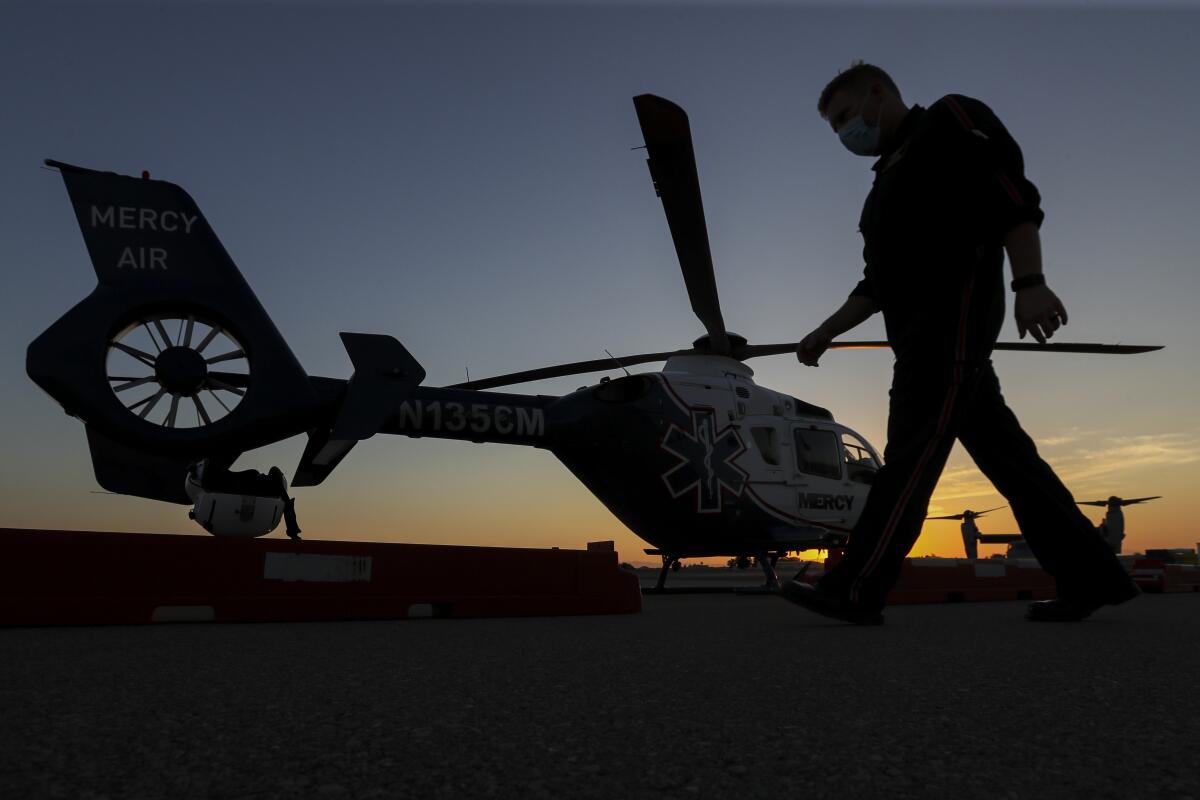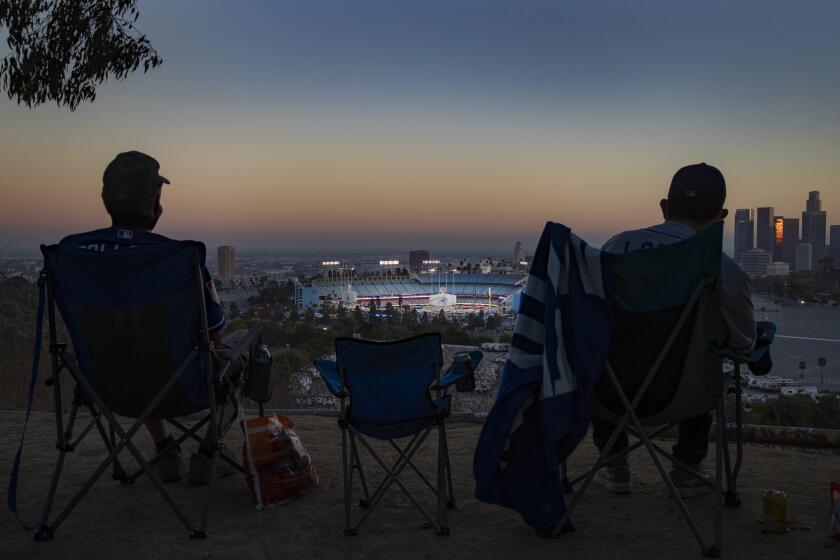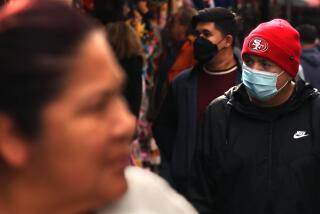California has the most coronavirus cases of any state, but there are signs of hope, Newsom says

- Share via
After a record-breaking month of fatalities linked to the coronavirus pandemic, California hit a grim milestone over the weekend: 500,000 confirmed cases of COVID-19, the most of any state.
The overall increase in cases, now more than 516,000, comes as deaths surge. In July, California broke the single-day record for deaths five times, and three of those record-setting days occurred last week.
Gov. Gavin Newsom said Monday that the Central Valley has overtaken Imperial County as the state’s hot spot. Eight Central Valley counties have seen hospitalization and infection rates that far outpace the rest of the state.
“We don’t want to see it go to where Imperial went,” Newsom said.
![]Paradise Valley Hospital in National City](https://ca-times.brightspotcdn.com/dims4/default/c624d56/2147483647/strip/true/crop/5180x3454+0+0/resize/1200x800!/quality/75/?url=https%3A%2F%2Fcalifornia-times-brightspot.s3.amazonaws.com%2F4a%2Fe7%2Ff4de9e1c408a8d9c7a0c35c7291e%2F566791-me-imperial-coronavirus-ik077.JPG)
Over the last two weeks, California saw an average of 121 deaths per day, Newsom said. On Friday, the state reported 214 fatalities, 21% more than the previous record, set two days prior.
Still, there are some early signs of hope, Newsom said. The number of people hospitalized statewide has fallen about 10% over two weeks, and admissions to intensive care units have fallen by 5%, he said.
The share of positive COVID-19 tests has fallen to 7%, even as the state has significantly expanded its testing capacity, Newsom said.
The rate of Californians testing positive is “not where it needs to be, and it’s still too high,” he noted. “But again, it’s good to see this number trending down, not trending up.”
Newsom attributed the modest improvements to better adherence to mask rules and social distancing and new “very, very difficult” state rules that shut down bars and other industries.
Second wave of coronavirus has businesses and the public moving from indoors to the great outdoors
But two weeks of data heading in the right direction are not enough to instill confidence, he said.
“We can quickly find ourselves back to where we were just a few weeks ago, a month ago, with significant increases if we do not maintain our vigilance, if we do not maintain our focus,” Newsom said. “This virus is not going away. It’s not just going to take Labor Day weekend off. It’s not going to take Halloween off, the holidays off.”
About 97% of the state’s residents live in a county that Newsom has flagged for high rates of disease transmission, high rates of positive tests or both. The 38 counties on the watchlist include every county in the Bay Area and in Southern California.
L.A. County health officials Monday expressed optimism that community spread of the coronavirus has slowed, saying this may be due to fewer opportunities for transmission in high-risk settings.
Officials said there were an average of 2,600 cases per day in the last week, down from a couple of weeks ago, when the daily count topped 3,000. On Monday, the Department of Public Health reported more than 1,600 new cases and 12 deaths, as well as 1,784 people hospitalized with confirmed cases of COVID-19.
The county’s seven-day positivity rate, or the average number of positive test results among all those tested in that period, remained mostly flat during July — hovering between 8% and 8.8%. The number of hospitalizations has been trending downward, officials said, noting that the current average of 2,000 hospitalizations is down from 2,200 in the middle of July.
Officials cited bar closures and businesses shifting from indoor to outdoor operations several weeks ago for the gains.
“The key indicators that we closely monitor at Public Health are looking positive, and I want to give credit to a large number of our county residents who heeded our orders and took the personal, basic actions needed to slow this virus,” Barbara Ferrer, director of L.A. County’s Department of Public Health, said in a statement.
“But for our long-term success, we need to continue limiting the spread of COVID-19. We can’t simply go back to life as we knew it before March. We unfortunately still have a long way to go; we must remain vigilant.”

In Imperial County, a surge in COVID-19 cases earlier this summer left the county’s two hospitals so overwhelmed that more than 650 patients were moved to healthcare facilities in other parts of the state, Newsom said. The number of new daily cases is now steadily falling.
In the Central Valley, Kern County is seeing 1,370 positive cases per 100,000 residents, the most in the state, according to the Los Angeles Times coronavirus tracker. Kings, Merced, Colusa, Tulare, Stanislaus, Fresno and San Joaquin counties are all seeing more than 500 cases per 100,000 residents.
The pandemic continues to disproportionately affect Black and Latino residents, and the disparity is widening. After adjusting for population, Latino residents are now 3.1 times more likely to test positive than white people.
Three-quarters of California’s COVID-19 victims have been older than 65, according to state data. But the share of younger people who are sickened and hospitalized is rising.
The first child in California to die of complications from COVID-19 was a teenager in Fresno, officials said last week.
“This is a sober reminder of how deadly this disease is, and how it can impact anybody,” Newsom said.
More to Read
Sign up for Essential California
The most important California stories and recommendations in your inbox every morning.
You may occasionally receive promotional content from the Los Angeles Times.













